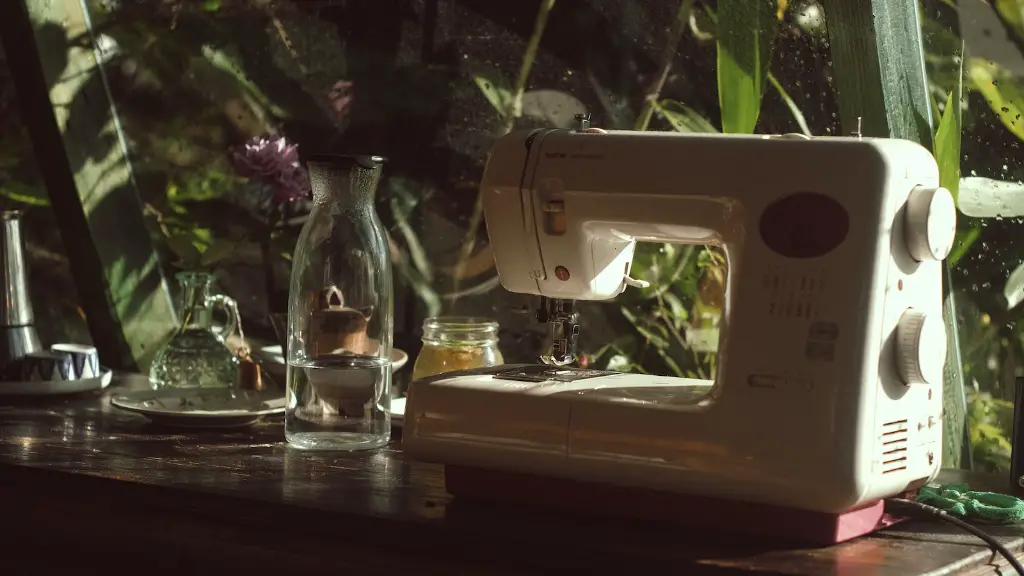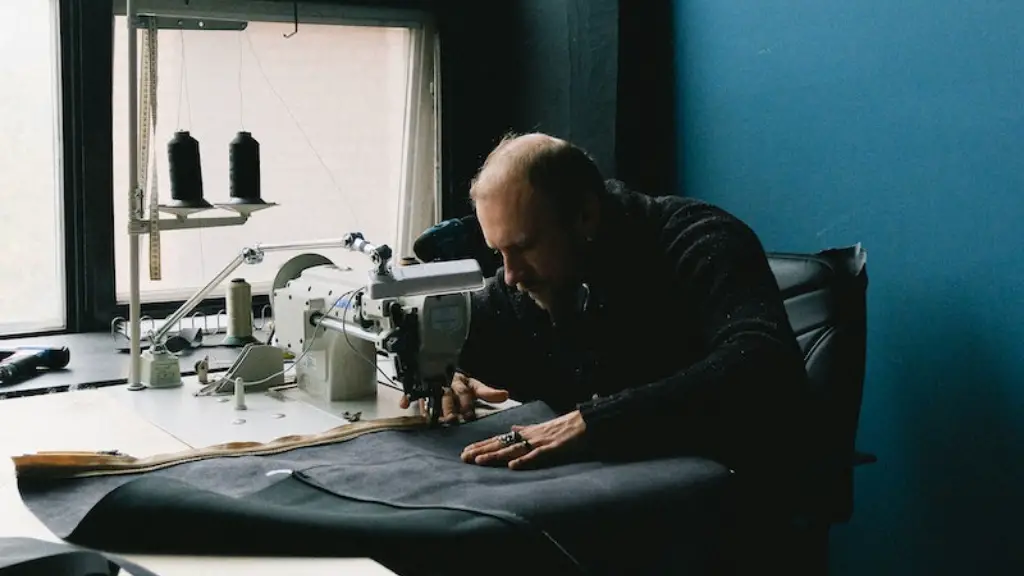Preparation
Making a leather wallet with a sewing machine is relatively simple, albeit time consuming. Before you begin, you’ll need to have the right supplies. You’ll need a leather piece at least 15 inches in length, a 3/4 inch wide riveter, a ruler, a metal punch, an awl, a waxed leather needle and sewing thread, heavy duty scissors and a sewing machine.
Prior to beginning, it’s important to note that you should use a heavy-duty needle or leather needle on your sewing machine. Thinner thread will give a better result than heavier thread. This is because the heavier thread may cause holes while sewing.
Cut out pieces of leather to the correct size. Cut two pieces of 10 inches by 10 inches, two pieces of 8 inches by 8 inches, and one piece 4 inches by 5 inches. The leather pieces should be cut out at least an inch wider than needed for the project, as it will allow for more stitching.
Rivets should be placed where the pockets will be in the wallet so that the pockets will stay closed. Rivets can be placed with the use of the metal punch. If you have the option, it is best to use a hydraulic press for riveting.
Creating the Wallet
The first step in creating the wallet is to sew the two small pieces of leather to the big piece. First, fold the two small pieces of leather in half and attach them with thread. Then, place the large piece of leather in the center and fold the edges up and around the two small pieces of leather. Once you are satisfied with the placement, sew them together using the waxed leather needle.
Once the two small pieces of leather are attached to the big piece, you will need to mark the locations of the pockets. You can use the ruler and awl to start making the holes. This way, when you sew the pockets, the holes will be close to the right size.
Once you have marked the locations of the pockets, you can start sewing them. Make sure to leave enough room to fit the rivets. Sewing the pockets can be difficult, so it’s important to take your time and make sure the pockets are even.
Once the pockets have been sewn, it is time to attach the rivets. Rivets should be placed in the same places as the holes. Make sure the rivets are placed securely.
Once the rivets are in place, you can add any other decorations you’d like. You could add a pocket or a pocket flap, embroidery or other embellishments.
Finishing the Wallet
The last step is to finish the wallet. If you are using a leather conditioner, apply it now. This will help to prevent the wallet from cracking and make it look better. You can also use a leather protector such as beeswax or leather sealer. This will give the wallet a protective coating and make it last longer.
After the leather conditioner is applied, it’s time to stitch the edges. Stitching the edges of the wallet will add another layer of protection and make the wallet look better. Make sure to use the waxed leather needle for this step.
Once the stitching is complete, it’s time to add the fasteners. Fasteners can be added in the form of snaps, Velcro or buttons. Choose the fasteners that suit your wallet best. Snaps are the easiest to put in place, but Velcro can be a good choice if you want the wallet to be more secure.
Taking Care of the Wallet
Once you have finished creating the wallet, it’s important to take good care of it. Leather wallets can last a long time if they are properly cared for. Make sure to keep the wallet out of direct sunlight and store it in a dry place. If the wallet gets wet, make sure to dry it off as quickly as possible.
Leather wallets can also be cleaned with a leather cleaner. Be sure to read the instructions on the cleaner before using it, as some cleaners may not be suitable for all kinds of leather. You may also want to use a leather conditioner to keep your wallet looking fresh and well cared for.
Cleaning and conditioning your wallet regularly will ensure it looks good and lasts a long time. Taking good care of your wallet will help ensure that you get the most out of it.
Making a Leather Wallet with a Sewing Machine
Making a leather wallet with a sewing machine is a great project for anyone who likes to work with leather. It requires knowledge of how to use a sewing machine as well as cutting and finishing techniques. While it may take some time to make the wallet, it is a rewarding project that can be cherished for years.
When making a leather wallet with a sewing machine, it’s important to have the right supplies and to take your time. Make sure to use a heavy-duty needle and thread, and be sure to use rivets to keep the pockets closed. Once the wallet is complete, make sure to take good care of it to ensure it lasts for a long time.
Tips for Sewing Leather on a Sewing Machine
When sewing leather on a sewing machine, it’s important to remember a few simple tips. First, use the right needle and thread. A leather needle is best, and you may want to use a thinner thread than normal. It’s also important to use a long stitch to ensure the leather stays intact. Finally, use a leather conditioner or sealer after you’ve completed the project to keep it looking fresh.
To make sure your leather project comes out looking its best, it’s important to take your time and use the right supplies. Using a leather sewing machine is can be tricky at first, but with practice, you can make beautiful leather projects that will last for years.
Stitching Different Parts of the Wallet
When creating a leather wallet, it’s important to consider how the different parts will be stitched together. You’ll need to make sure that the pockets and other parts are sturdy. This means that you may need to use a different kind of stitch for the pockets than for the main part of the wallet. You can also use a different kind of stitch for the edges of the wallet to give it a finished look.
Using the right kind of stitch can make all the difference in how the wallet looks and feels. It’s important to think about this when you are creating the wallet, and make sure to use the right stitch for the right parts. You should also consider what kind of fasteners you’ll be adding to the wallet, as this will affect how the wallet closes and how secure it is.
Alternative Materials
When making a leather wallet with a sewing machine, there are alternatives to using leather. You may choose to use fabric instead. Fabric is easier to work with because it doesn’t have to be punched or punched and riveted. Fabric wallets can also be more lightweight and less bulky than leather wallets. If you choose to use fabric, make sure to use a heavy-duty thread to ensure a secure stitch.
When working with fabric, it’s also important to consider the washing instructions and how the fabric will hold up over time. Some fabrics may not last as long as leather when exposed to the elements, so you’ll need to choose a fabric that is durable. Additionally, some fabrics may require a specific kind of stitch or need to be pre-washed before use.
When working with fabric, it’s important to remember that it is generally easier to work with. It may require different stitches and supplies than when working with leather, but the overall process is usually easier.
The Best Leathers to Use
When working with leather, it’s important to choose the right kind of leather. Different leathers have different qualities and will react differently to different sewing techniques. Vegetable tanned leathers are a popular choice for wallets because they are strong and durable. They are also relatively easy to work with. Chrome-tanned leathers are also a good choice for wallets, as they have a softer texture and are more flexible.
You should also consider the grain of the leather when making a wallet. Full-grain leathers are the strongest and most durable, while split-grain leathers are less expensive but less durable. Additionally, some leathers may need to be pre-oiled to ensure a better finish.
When choosing a leather, make sure to consider the look, feel and durability. Different leathers have different qualities and will work best for different projects.





